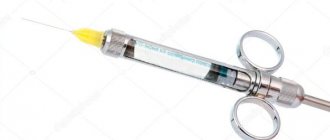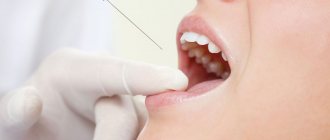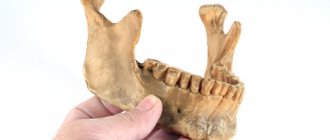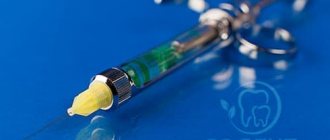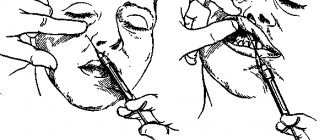The level of effectiveness of a patient's dental treatment in dentistry largely depends on whether the treatment is painless. After all, the problem of pain in patients is important and quite relevant. People, by postponing a visit to their dentist, trigger the disease because they are afraid of the pain of dental treatment.
However, there are different methods of dental anesthesia, which can completely eliminate all pain through high-quality anesthesia. Effective local anesthetics in dentistry are an excellent solution to completely eliminate pain when treating the oral cavity or teeth, because they allow you to maintain a connection between the patient and the doctor. The anesthetic dulls the receptors, which leads to blocking pain during dental or oral treatment.
Types of anesthesia used in dental practice
When treating the oral cavity and teeth, anesthesia is used - general or local.
Anesthesia (general anesthesia) is used quite rarely. With this anesthesia, the patient is unconscious while the treatment is underway and does not feel anything. Anesthesia (general anesthesia) is used only for major operations or when treating children. This type has too many contraindications and all sorts of complications, so dentists almost always prefer local anesthesia. This is the best option for dental intervention.
Local anesthesia - pain relief by freezing or injection into the gum. In this form, the anesthetic temporarily disables the sensitivity of pain in the area specified for treatment. Tactile sensations are preserved during local anesthesia. The patient feels touch or pressure on the tooth or gum, but the patient has no pain. To numb the patient's upper tooth, a local anesthetic is injected into the gum near the painful tooth. This is infiltration anesthesia. Lower teeth - by injecting the patient with a local anesthetic near the mandibular nerve. This will be a conduction anesthesia. It will lead to numbness of the tongue and lower jaw. In dental practice, there is also topical anesthesia, which will make treatment of a certain area of the oral mucosa painless by applying a special gel or spray to it. This anesthesia will be appropriate before infiltration anesthesia, so that the needle prick is imperceptible to the patient.
How is childhood caries diagnosed?
Tooth decay occurs much faster in children. This process takes several months. All due to weak enamel of baby teeth. They are permeated with many micropores through which bacteria penetrate. Therefore, you need to undergo a dental examination at least once every 3-4 months.
At different stages of caries, its symptoms differ:
- Initial stage. White spots appear on the tooth enamel, which then turn yellow and become rough. There is no pain, although the tooth may react to hot and cold. To eliminate initial damage, you do not need to drill the tooth. In such cases, it is possible to restore the enamel without filling.
- Middle stage. A “hole” is formed at the site of damage to the enamel. Food debris and softened dectin accumulate in it. In such cases, a cavity is formed and a filling is placed to prevent further decay.
- Deep stage. Not only the enamel is destroyed, but also the bone tissue of the tooth. The damage is noticeable to the naked eye. Deep caries can be cured with fillings, but sometimes even this does not help. In some cases, it is necessary to remove a baby tooth.
Diagnosis of carious lesions is carried out visually or using a special probe. If the “hole” is located in a remote place, an oral camera or x-ray is used. In the initial stages of caries, a special composition is used, which is applied to all teeth. It turns the affected areas pink or blue. This method has no side effects.
Components of anesthetics
The anesthetic contains local anesthetics, preservatives, vasoconstrictors and stabilizers. The drug used for local anesthesia for pain relief may not contain all of the listed components. To effectively block impulses from nerve endings, one anesthetic is used, and to prolong the period of action and enhance the analgesic effect, vasoconstrictors (adrenaline) are needed. It is used to create and maintain a sufficient concentration of the drug in the treatment area. Preservatives and stabilizers are used in practice to increase the shelf life of anesthesia.
Pain relief: in the treatment of caries, pulpitis, periodontitis, minor surgical procedures
The following types of anesthesia are distinguished:
- Application; With this anesthesia, lidocaine and dicaine are most often used in the form of ointments and aerosols. Applied with a cotton swab to the mucous membrane, the local anesthetic penetrates 3 mm deep into the tissue, which makes the needle prick painless. This superficial anesthesia is used when removing dental plaque, removing mobile and baby teeth, before performing a deeper type of anesthesia.
- Infiltration; It is performed by injecting an anesthetic under the mucous membrane or periosteum. This is the most common use in dentistry. It is used in the treatment of caries, pulpitis, periodontitis, and minor surgical procedures (tooth extraction, incision). Pain relief occurs within 5 minutes. Duration of action is more than 60 minutes.
- Conductor; With this type of dental anesthesia, the drug is administered to the branches of the trigeminal nerve. This is a deeper and longer-lasting type of pain relief.
What does the anesthetic consist of?
Most anesthetics contain a main component (usually lidocaine, articaine, mepivocaine) and a vasoconstrictor (adrenaline); it has a vasoconstrictor effect, increases the duration of action of the anesthetic and reduces its toxicity. A local anesthetic is injected locally and blocks the conduction of nerve impulses only in a limited area.
Our clinic uses only imported anesthetics that have been tested and certified. The anesthetic is selected individually, based on the complexity and duration of the manipulation, as well as the characteristics of the patient’s health and allergy status.
Our doctors will help you choose an anesthetic for patients suffering from diabetes, cardiovascular diseases (hypertension, coronary artery disease, arrhythmias), pregnant and lactating women, the elderly, and patients suffering from allergies. Preliminary drug preparation will be carried out; it will help reduce anxiety and anxiety before the upcoming anesthesia and manipulation.
For example: the day before a dentist appointment, we recommend taking one tablet of Phenosipam at night, which has a pronounced relaxing effect. However, there is a side effect - drowsiness the next day. A more harmless option is to take a “cocktail” 40 minutes before the intervention: 30 drops of valerian + 30 drops of motherwort + 30 drops of hawthorn + 30 drops of Corvalol in a glass of water.
If you are afraid of toothache, if you need painless dental treatment, call us at the numbers listed on the website and make an appointment with a doctor at the Royal Dent private dental clinic.
Basic requirements for modern anesthetics
An anesthetic is a unique substance that suppresses the excitability of the receptor, turns off the impulse to the patient’s nerve fibers, after which pain relief occurs.
The anesthetic has basic requirements:
- do not cause dilation of the patient’s blood vessels;
- do not provoke tissue irritation;
- high resistance to sterilization of the drug;
- slow absorption into the blood;
- greater strength and duration of analgesic effect;
- have low toxicity to the patient;
- good analgesic effect during dental treatment.
The local anesthetic has a direct inhibitory effect on the receptor and the permeability of the sodium channels in the patient begins to decrease, while the entry of sodium into the human cell is completely disrupted, after which an action potential is generated and this all leads to a lack of sensitivity and analgesia during treatment. Sensitivity is switched off one by one: at the beginning pain, then taste, then temperature and finally tactile. This is how the process of pain relief occurs.
To prolong the effect of painless treatment, a vasoconstrictor (for example, adrenaline) must be added to the local anesthetic. However, in patients with heart disease, it poses a greater risk of heart attack. A vasoconstrictor can cause the patient to relax the muscles of the bronchi and intestines, dilate the pupils, significantly increase blood sugar, increase tissue metabolism and cause many adverse reactions. But if you exclude adrenaline from the local anesthetic drug, this will lead to ineffectiveness and the patient will not experience pain relief.
The decision to use this substance in treatment should be made by an experienced dentist, as a last resort. After all, after adding adrenaline to the local anesthetic, the effectiveness of anesthesia itself during dental treatment increases significantly and its toxicity for the patient decreases. This occurs due to the very slow absorption of the painkiller into the blood. And sometimes toxic complications that appear during local anesthesia are mistakenly attributed to a side effect of the substance adrenaline.
Classification of anesthetics in dentistry
Before dental treatment, the doctor should choose an effective local anesthetic agent individually for each person. The appropriate anesthetic is selected depending on the procedure itself, the duration of the procedure, and the patient's tolerance to the anesthetic drug.
Chemical properties divide the local anesthetic into groups such as substituted amides (articaine, lidocaine, trimecaine) and esters (novocaine, anesthesin, dicaine). These two groups have differences in biotransformation, and most importantly, in side effects for the patient.
Classification according to the method of administration divides local anesthetics in dentistry into those that are used for surface anesthesia and those that are used for conduction and infiltration anesthesia. Based on the duration of its action, anesthetics are classified into short, medium and long-acting.
Types of anesthesia, how it is done
The dentist can use application, infiltration and conduction anesthesia. In each case there will be a different depth of impact. Accordingly, anesthesia after tooth extraction will weaken, depending on the location of exposure and the concentration of the drug.
- The application type of anesthetic is a solution or gel that is applied to the surface of the mucous membranes. The effect is on receptors in the mouth and peripheral nerve endings. This type of anesthesia is used to relieve pain before injections, as well as when removing children's baby teeth.
- Infiltration is a shallow injection that allows you to locally “freeze” the peripheral nerves. This is the option most often used for dental treatment, extractions and simple surgical interventions.
- The conduction type of anesthesia allows you to “turn off” nerve channels and trunks. When it is necessary to desensitize half of the jaw, this option is used. It is used for tooth extraction, surgical interventions, and severe inflammatory processes. The injection is performed closer to the temporomandibular joint, in the branch of the trigeminal nerve.
Anesthetic for applications - a solution or gel applied to the mucous membranes
In complex cases, when the patient is treated using sedation with analgesia or general anesthesia, the anesthesiologist is responsible for deactivating the effects of the drugs. In this case, there is an effect on the central nervous system, suppressing not only the patient’s consciousness, but also all reflexes. General anesthesia after tooth extraction is completely removed within 24 hours. After such manipulations, the patient is transferred to intensive care, where he is under the supervision of specialists.
Local anesthetic preparations for dental treatment
For high-quality pain relief, the dental clinic uses the latest generation local anesthetic. To administer the drug with a local anesthetic, take carpules and carpule syringes, which already contain the solution itself. The quality of dental treatment for patients using such syringes is much higher than with a simple disposable syringe. After all, the needle is much thinner than simple disposable syringes and the injection is not so painful.
Carpule anesthetics in dentistry are good because they have the following advantages:
- Complete sterility, 100% guarantee against excess substances entering the local anesthetic.
- Exact dosage of the required components. The syringe contains a ready-made anesthetic drug.
- There is no pain from the injection, since the needle is thinner than that of a disposable simple syringe.
The previously used novocaine or lidocaine has long faded into the background, as they have low effectiveness and allergic manifestations. Today they are practically not used, mainly as anesthesia in public clinics.
In advanced dental clinics, effective drugs based on articaine or mepivacaine are used to provide good anesthesia.
Articaine is an effective anesthetic that is used for high-quality local anesthesia (for example, Ultracaine). It consists of articaine and adrenaline. Mepivacaine has a great ability to constrict blood vessels, but it also has a slightly less effect from local anesthesia. The drug is used for dental treatment in young children, pregnant women, as well as patients who have hypertension and those for whom adrenaline is completely contraindicated. In such cases, a drug that contains mepivacaine (for example, Scandonest) is used to treat the patient’s oral cavity.
Indications and contraindications for anesthesia during dental treatment
Pain relief is indicated in the following cases:
- Low pain threshold and pain intolerance;
- Severe psychological discomfort, anxiety, fear during treatment;
- Serious surgical interventions, tooth extraction, treatment of deep caries, removal of plaque and tartar, dental implantation.
Local anesthesia has almost no contraindications, mainly due to individual intolerance to the components of the anesthetic;
Anesthesia is excluded in the following cases:
- Pregnancy (due to the negative effects of medications on the fetus);
- Allergic reactions to anesthesia components;
- Diseases of the heart and blood vessels;
- Mental disorders, epilepsy;
- Early childhood;
- Recent stroke, heart attack or traumatic brain injury;
- Acute viral disease.
Criteria for choosing a high-quality local anesthetic
The main criterion for choosing an effective local anesthesia will be the nature of the upcoming dental intervention. The doctor selects the drug taking into account the required depth of treatment, the duration of local anesthesia according to the nature and scope of the upcoming intervention. The choice of anesthetic is influenced by pregnancy, great fear of the upcoming manipulation, and possible pathology in the patient. Take into account the presence of contraindications during treatment. There are age restrictions for the use of anesthetics. The dosage of anesthesia for dental treatment of the teeth of young children or elderly patients is always specified.
Contraindications for the use of local anesthetic
To ensure that the local anesthetic is safe for the patient, contraindications for use should be taken into account. They can be grouped:
- Allergic manifestations in a patient to an anesthetic. It is a complete contraindication to the use of such a remedy to anesthetize the patient’s teeth. It is imperative to warn your dentist about the presence of allergic manifestations or a possible reaction to previous treatment of the oral cavity and teeth.
- There is a deficiency of metabolic systems. Many painkillers have a strong toxic effect in case of overdose of local anesthesia, insufficient metabolism and excretion. In this situation, it is better to use the drug in small doses.
- Age. For small children, the local anesthetic is taken in a lower dose than for anesthetizing the teeth of adult patients. To achieve effective dental pain relief, it is necessary to use a safe local anesthetic drug, limiting the dosage.
In modern dental practice, there is a wide selection of over-the-counter products that contain an anesthetic and will make dental treatment painless. After all, it is the main reason for the strong fear of patients in dental clinics.
Modern clinics offer painless treatment of the oral cavity or teeth using a local anesthetic. There is no need to be afraid of going to the doctor, put off this visit and make the disease worse, because today you can cure, remove a tooth or install an implant without pain. You need to decide on a dental clinic and choose a good doctor. He will be able to qualitatively cure the tooth by selecting an effective local anesthetic to numb the mouth or teeth. This is the key to painless treatment of the patient’s teeth and oral cavity.
